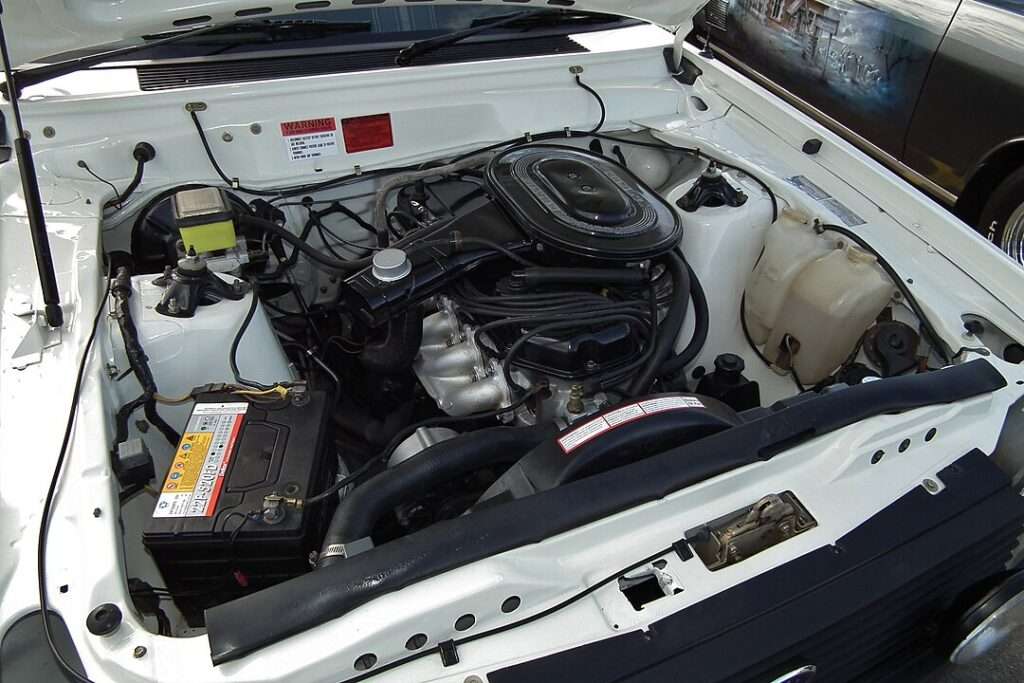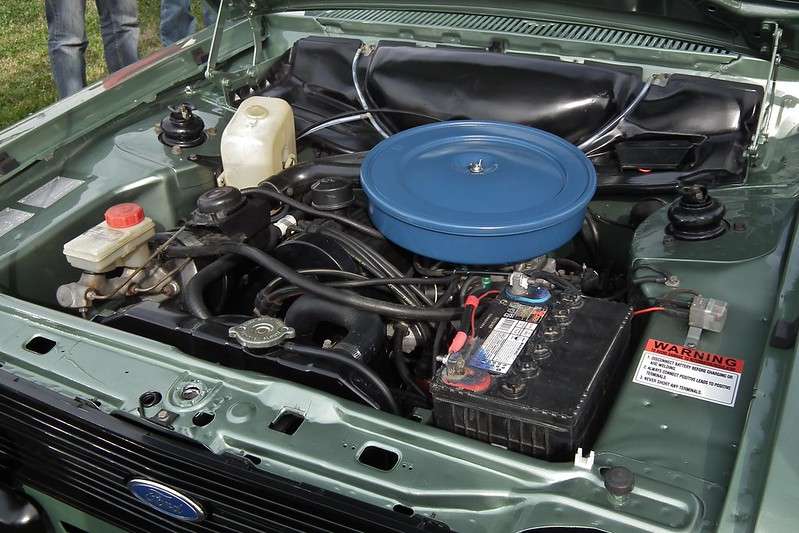Weak car battery symptoms include difficulty starting the engine, dim headlights and interior lights, malfunctioning electrical components like radio and the constant need to jumpstart the vehicle.
Oftentimes people confuse between signs of a bad battery vs bad alternator because of their similarity. We’re going to look into the differences below.
There are several causes of a weak car battery inclusive of depleted battery lifespan, manufacturer defects and poor car battery use and maintenance.
Signs of a weak car battery.
When the car won’t start, dim car lights and malfunctioning electrical components are the signs of a weak car battery.
Consider potential causes of a weak car battery like a bad starter or corrosion on the battery terminals. Regularly inspecting your car’s battery for signs of damage or corrosion can help prevent future problems.
However, if you experience these common signs of a failing car battery, replace it with a new one. This will ensure reliable performance and prevent unexpected breakdowns on the road.
(a). Difficulty starting the engine.
Whenever a weak car battery is responsible for a car that won’t start, cranking becomes slow and sluggish.
In this case, the engine takes longer to start than usual. Furthermore, you may hear a clicking noise when turning the key in the ignition.
(b). Dim headlights and interior lights.
A weak car battery will cause the vehicle’s lights to appear dimmer than normal, especially at night. The dashboard indicator lights tend to flicker or become very weak. Furthermore, interior lights also exhibit decreased brightness.
(c). Malfunctioning electrical components
Power windows operate slower than usual or get stuck midway when the car battery is weak. Secondly, the radio or infotainment system experiences frequent disruptions or fails to turn on. Additionally, the air conditioning system becomes less effective or stops working altogether.
(d). Low voltage readings.
Using a multimeter or voltmeter, you can check if your battery has low voltage output (below 12 volts), indicating potential weakness.
These symptoms indicate a bad car battery that needs attention. If left unaddressed, a weak battery can lead to a dead car battery, leaving you stranded. It is important to recognize these warning signs and take appropriate action to avoid getting stuck with a non-functional vehicle.
Remember that handling batteries requires caution due to the presence of battery acid. Always wear protective gloves and eyewear when examining or replacing your car’s battery.
Identifying weak car battery symptoms.
In order to identify weak car battery symptoms, you will need to test the battery voltage and undertake some checks that will pin point that your battery is weak.
(a). Testing the battery voltage with a multimeter.
To determine if your car’s battery is weak, you can test its voltage using a multimeter. Start by setting the multimeter to DC voltage mode.
Afterwards, connect the positive (red) probe to the battery’s positive terminal and the negative (black) probe to the negative terminal. Then read the voltage displayed on the multimeter. If the reading is below 12.4 volts, it indicates a weak battery that may need attention.
(b). Steps to identify a weak battery symptoms
Check for dim headlights or interior lights, as they can be an early indicator of a weak battery. Listen for sluggish cranking or difficulty starting your vehicle.
Furthermore, pay attention to warning signs like a check engine light or other dashboard alerts. If possible, try jump-starting your car using jumper cables and another vehicle with enough power.
Importance of regular battery maintenance.
Regular maintenance prevents weak car batteries and related issues. Have your battery inspected during routine auto repairs or maintenance checks.
Ensure proper connections and clean any corrosion from terminals regularly. Keep an eye on water levels in non-sealed batteries and add distilled water if necessary. Minimize potential problems and extend your battery’s lifespan by prioritizing regular maintenance.
Addressing weak car battery symptoms promptly will help prevent being stranded on the road and costly repairs down the line. If you’re unsure about diagnosing or repairing your car’s electrical issues, it’s always best to consult with a qualified mechanic.
Impact of cold weather on car batteries.
As the temperature drops, the chemical reactions within the battery slow down, making it harder for the battery to produce sufficient power. This can result in weak car battery symptoms such as difficulty starting your vehicle or dimming headlights.
To avoid being stranded with a dead battery during winter months, it is important to regularly check and maintain your car battery’s health. Keep an eye out for signs of a failing battery and take necessary steps to address any weak car battery symptoms you may encounter.
Regularly inspect your car’s electrical system, including the battery terminals and cables, for any signs of corrosion or damage. Consider investing in a portable jump starter or carrying jumper cables in case of emergencies. If you live in an area with extremely low temperatures, parking your vehicle in a garage or using a block heater can help prolong your car battery’s life.
Purpose of a car battery and alternator.

The purpose of a car battery and alternator include providing power, electric energy storage and regulating voltage levels in the vehicle’s electrical system. The car battery and alternator work together to ensure the smooth operation of various electrical components.
(a). Power supply.
The battery and alternator provide power for ignition, lights, and accessories when starting the engine. The car battery supplies the initial power required to start the engine.
It delivers a surge of electricity to ignite the fuel and activate the starter motor. It powers up the lights and accessories before the alternator takes over.
(b). Electric energy storage.
The car battery stores excess electrical energy generated by the alternator. As you drive, the alternator generates electricity by converting mechanical energy from the engine into electrical energy.
This excess electrical energy is then stored in the car battery for later use when demand exceeds what the alternator can provide.
(c). Maintaining stable voltage levels.
These two vehicle electrical system components help maintain stable voltage levels throughout various electrical loads. The car battery acts as a stabilizer for voltage levels in your vehicle’s electrical system.
It ensures that there is a consistent supply of power to all components, regardless of fluctuations caused by different loads such as headlights, air conditioning, or audio systems.
Both your car battery and alternator are involved in keeping your vehicle running smoothly. Regular maintenance and periodic checks on these components will help prevent weak car battery symptoms and ensure optimal performance for your car.
Understanding the role of battery and alternator.
The battery is a crucial component in your vehicle’s electrical system. Acting as a storage device for electrical energy, it provides power to start the engine, operate the lights, and run various electrical components.
On the other hand, the alternator serves as a generator that produces electricity while the engine is running. The collaborative role between these two components ensures that your vehicle’s electrical system functions properly.
(a). Role of the alternator in generating electricity.
The alternator generates electricity when the engine is running. It converts mechanical energy from the engine into electrical energy.
This electrical energy charges the battery, replenishing its power and ensuring it remains charged for future use. The battery then supplies this stored energy to various electrical components in your vehicle, such as the starter motor and headlights.
(b). Role of battery in starting the vehicle.
When you start your car, battery power is used to activate the starter motor, which cranks and starts the engine.
(c). Role of alternator when car engine is running.
Once the engine is running, the alternator takes over by producing electricity to power all other electrical systems while also charging the battery.
In situations where weak car battery symptoms persist despite recharging, it may be necessary to consider battery replacement. Ensure that the battery case is securely connected and free from corrosion on the battery terminals.
Differentiating between bad battery and alternator.
Consider the types of malfunctions that your vehicle is experiences in order to determine whether the source of electrical issues is a bad battery vs alternator.
(a). Power supply during and after engine start.
The battery plays a crucial role in providing initial power to start your car, while the alternator takes charge of charging the battery while you drive.
The battery is responsible for supplying the necessary electrical energy to start your vehicle. If you experience difficulty starting your car or notice that it takes longer than usual, it could be a sign of a weak car battery.
On the other hand, the alternator replenishes the battery’s power while you’re driving. If you frequently encounter dimming headlights or see warning lights on your dashboard, it may indicate a problem with the alternator rather than the battery.
(b). Perform a test.
One way to differentiate between a bad battery and an alternator issue is by performing a simple test. Start your car and then disconnect the negative terminal of the battery. If your vehicle continues running smoothly without any electrical issues, it suggests that the alternator is functioning correctly but there might be an underlying problem with your battery.
However, if disconnecting the negative terminal causes your car to stall or experience electrical problems, such as dimming lights or loss of power, this points towards a faulty alternator that needs attention.
(c). Jumpstarting the vehicle.
Another indicator of a bad alternator is when you jump-start your car and it fails to hold its charge for long periods. This can be attributed to insufficient charging by a malfunctioning alternator. However, when the car won’t jumpstart, the battery is problematic.
Conducting simple tests like disconnecting the negative terminal will help you to identify whether you’re dealing with a weak car battery or a bad alternator. Address these issues promptly to avoid getting stranded on the road.

